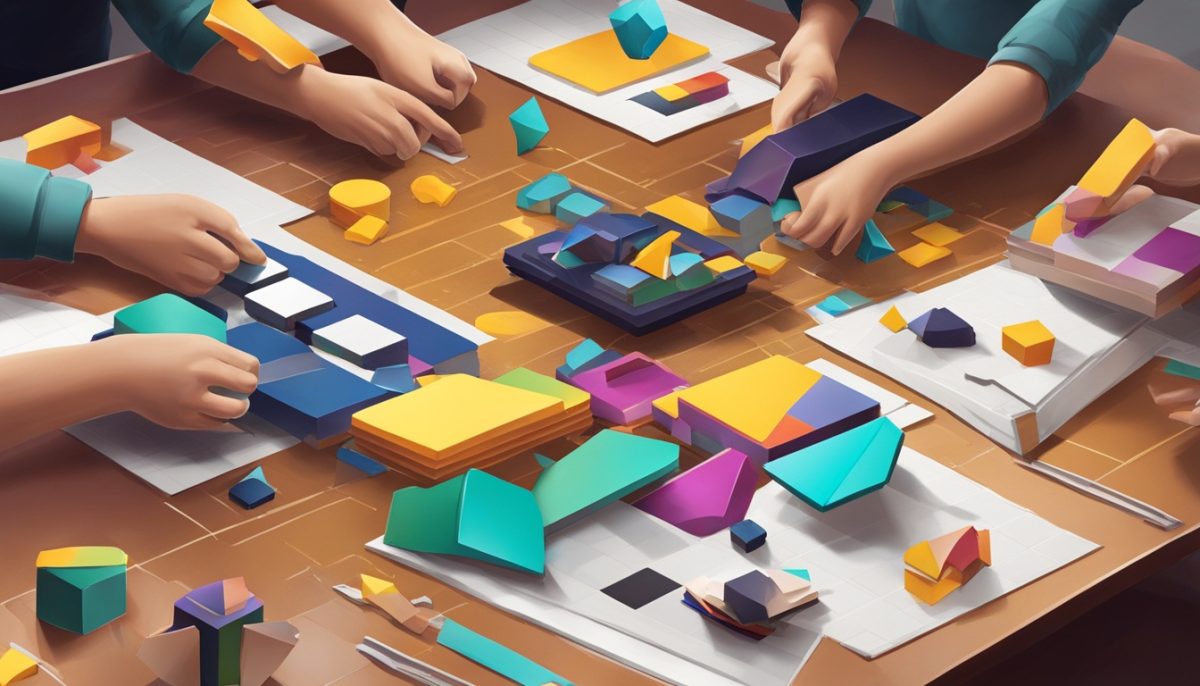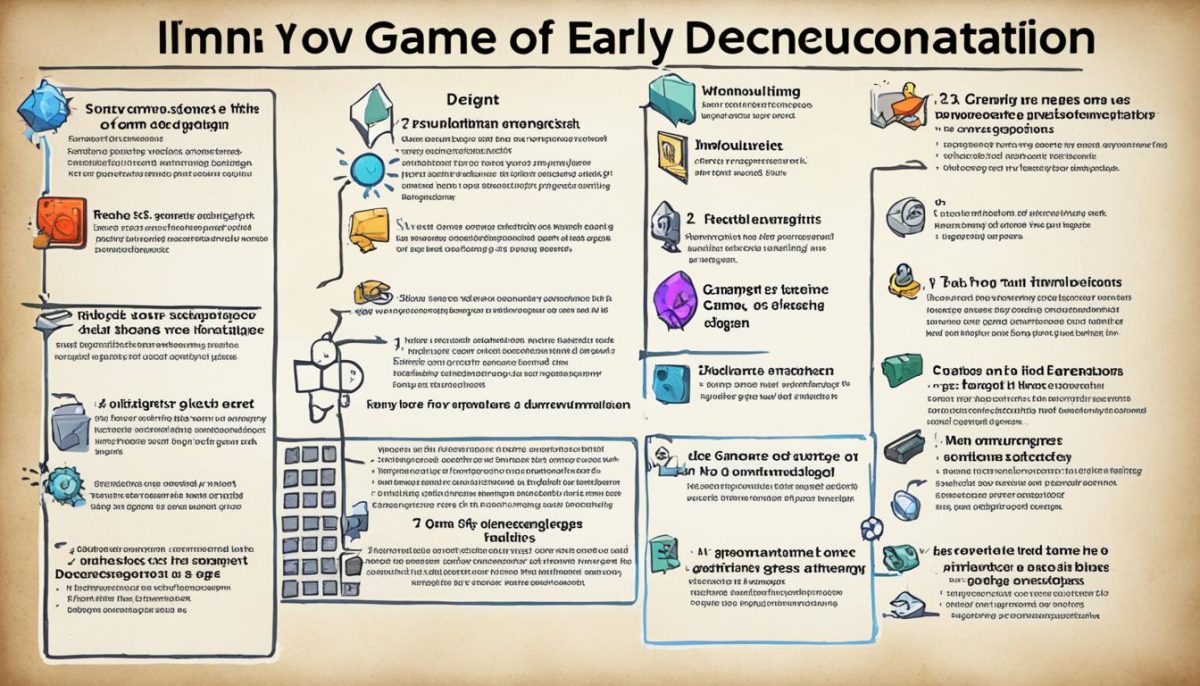What Is The First Step In The Game Design Process?
Welcome to our article on game design! Are you ready to embark on an exciting journey into the world of game creation? Before we dive in, let’s start with the first step in the game design process. Understanding this initial phase is crucial for setting a strong foundation for your game and ensuring its success.
So, what exactly is the first step? It’s the process of conceptualization. This is where the magic begins as you generate and refine ideas for your game. During this step, you define the overall vision and goals of your game, brainstorm gameplay mechanics, and consider the target audience and market trends.
The importance of conceptualization cannot be overstated. The better you establish your game’s concept, the smoother the rest of the design process will be. By creating a solid foundation at the beginning, you pave the way for a successful and engaging game.
Now that you understand the significance of the first step in the game design process, let’s dive deeper into the role of conceptualization, game documentation, prototyping, playtesting, and iteration. Together, these elements will shape your game and bring it to life.
The Importance of Conceptualization
Conceptualization is the first step in the game design process, and it plays a crucial role in creating a successful game. This step involves generating and refining ideas that will form the foundation of your game’s design.
During the conceptualization phase, you will define the overall vision and goals of your game. This is the time to brainstorm and explore different gameplay mechanics, storylines, and art styles. It’s important to consider the target audience and market trends to ensure your game appeals to the right players.
By giving careful thought to your game concept, you are setting the stage for the rest of the design process. Conceptualization is important because it establishes the core identity and direction of your game. It helps you create a unique and engaging experience that resonates with players.
“Conceptualization is key to a successful game design. It’s like building the blueprint for your game, where every feature and aspect is carefully considered and planned.” – Jane Smith, Game Designer
One of the main benefits of effective conceptualization is that it provides clarity and focus for your development team. With a well-defined concept, everyone involved understands the vision and goals, making collaboration more efficient.
When brainstorming your game’s concept, consider the following:
- What is the central theme or story of your game?
- What are the unique gameplay mechanics that will make your game stand out?
- Who is your target audience, and what are their preferences?
- How does your game fit into the current market trends?

By taking the time to thoughtfully conceptualize your game, you lay a strong foundation for the design process. This initial step ensures that your game has a clear direction and a compelling concept that captures the interest of players.
Next, we will explore the role of game documentation in translating your game concept into actionable design plans.
The Role of Game Documentation
Documentation plays a vital role in the first step of the game design process. Once you have a clear concept in mind, it’s important to document your ideas and plans. Game documentation can take various forms, such as concept documents, design documents, or game pitches.
Proper documentation serves as a reference point throughout the game development, keeping the team aligned and ensuring a coherent design process. It helps you articulate your vision, outline the game’s mechanics, story elements, and desired player experience. By documenting your ideas, you can effectively communicate the game’s concept to other team members, stakeholders, and potential investors.
Types of Game Documentation
There are several types of game documentation that you may find useful in your design process:
- Concept Documents: These documents provide an overview of your game’s concept, including its genre, setting, and core gameplay mechanics. They help establish the vision and direction of your game.
- Design Documents: Design documents are more detailed and comprehensive. They cover various aspects of the game, such as gameplay mechanics, level design, characters, and story. Design documents serve as a blueprint for the development team.
- Game Pitches: Game pitches are concise and persuasive documents that summarize your game’s concept and value proposition. They are often used to pitch your game to publishers, investors, or potential collaborators.
Each type of documentation has its own purpose and audience. It’s important to choose the appropriate format that best suits your needs and effectively conveys your ideas.
The Benefits of Game Documentation
Efficient game documentation offers several benefits to the game design process:
“Documentation provides a clear roadmap for the game’s development, ensuring that everyone involved understands the overall vision and goals.”
First and foremost, documentation helps you maintain a clear vision for your game. It allows you to define and refine your ideas, ensuring that all team members are on the same page. With documented plans, you can minimize miscommunication, avoid misunderstandings, and prevent unnecessary rework in later stages of development.
“Documentation serves as a reference point throughout the design process, helping you stay focused on the game’s objectives and providing a framework for decision-making.”
Game documentation serves as a reference point when making important design decisions. It helps you evaluate ideas, assess their alignment with your game’s vision, and prioritize features. With documentation in place, you can make informed choices and ensure that your game aligns with your original concept.
“Proper documentation enhances collaboration and facilitates effective communication among team members.”
By documenting your game design, you create a shared language and understanding within your team. Documentation ensures that everyone involved in the development process has access to essential information and can contribute their expertise effectively.

Overall, game documentation is crucial for the success of a game design process. It helps you clarify your ideas, communicate your vision, and maintain a cohesive and efficient development workflow. With proper documentation in place, you can effectively navigate the challenges and complexities of game design, setting the stage for a successful game creation journey.
Prototyping and Playtesting
After the conceptualization and documentation stage, the next crucial step in the game design process is prototyping and playtesting. This phase plays a vital role in refining your game and ensuring a seamless gameplay experience.
Prototyping involves creating a basic version of your game that includes the core mechanics, level design, and overall flow. It allows you to test different gameplay ideas, experiment with mechanics, and identify potential design flaws or areas for improvement. By building a prototype, you can visualize and interact with your game concept, gaining valuable insights into its feasibility and playability.
Once you have a working prototype, it’s time to engage in playtesting. Playtesting involves gathering feedback from actual players, whether they are potential customers, friends, or members of your development team. These players immerse themselves in your game and provide valuable insights on various aspects, such as the game’s difficulty, pacing, mechanics, and overall enjoyment.
Playtesting is a fundamental part of the game design process that helps you uncover hidden issues, validate your design choices, and make necessary adjustments to enhance the player experience.
– Jane Austin, Lead Game Designer at XYZ Games
By observing players in action, you can identify gameplay patterns, observe their reactions, and understand what engages or disengages them. This direct feedback loop allows you to refine your game design, make iterative improvements, and align your vision with player expectations and preferences.
The Benefits of Prototyping and Playtesting
Integrating prototyping and playtesting into your game design process offers numerous benefits:
- Identify Design Flaws: By prototyping, you can discover design flaws and address them early on, preventing potential issues in the final product.
- Optimize Gameplay: Playtesting enables you to fine-tune gameplay mechanics, pacing, and difficulty levels to ensure an engaging and satisfying experience for players.
- Validate Ideas: Prototyping and playtesting help you validate your design choices and verify if your initial concept translates well into an enjoyable game.
- User-Centric Approach: By gathering feedback from players, you can adopt a user-centric approach and create a game that meets their expectations and desires.
- Enhance Game Balance: Playtesting helps you identify imbalances in the game’s systems, allowing you to adjust them and create a more fair and enjoyable experience for players.
Iterative Refinement through Prototyping and Playtesting
The process of prototyping and playtesting is iterative, meaning that you will go through multiple cycles of refinement. Each cycle builds upon the previous one as you incorporate feedback and make improvements accordingly. This iterative approach ensures that your game evolves and improves throughout the design process.
During each iteration, you can test new ideas, gather additional feedback, and refine your gameplay mechanics and features. This cyclical process allows you to polish your game, address any remaining issues, and enhance the overall player experience.
In conclusion, prototyping and playtesting are critical steps in the game design process. They allow you to identify design flaws, optimize gameplay, validate ideas, adopt a user-centric approach, and enhance game balance. By incorporating prototyping and playtesting into your design workflow, you can ensure that your game meets the desired objectives and provides an engaging experience for players.
Iteration and Refinement
Once you have gathered feedback from playtesting, the next step in the game design process is iteration and refinement. This crucial stage allows you to go back to the drawing board and improve upon your initial designs, ensuring that your game meets the desired objectives and provides an engaging experience.
During iteration and refinement, you have the opportunity to make adjustments based on user feedback. This could involve tweaking gameplay mechanics to enhance the overall flow of the game, adjusting the level of difficulty to strike the right balance, or refining the user interface to optimize the player’s interaction.
One of the main goals of iteration and refinement is to make your game more enjoyable and engaging. By carefully analyzing user feedback and incorporating valuable insights, you can address any areas of improvement or identify design flaws that may have been overlooked during the earlier stages of development.
The iterative nature of this process is what sets game design apart from other forms of creative development. It allows for continuous improvement and refinement, ensuring that your game evolves and matures as you progress through the design journey.
“Iteration and refinement are the key to success in game design. Embrace the feedback provided by playtesting and use it as fuel for enhancing the experience you offer to players.”
Benefits of Iteration and Refinement
1. Improved Quality: By iterating and refining your game, you have the opportunity to enhance its overall quality, ensuring a polished final product that meets the expectations of players.
2. Enhanced Player Experience: The iterative nature of the design process allows you to fine-tune gameplay mechanics, balance challenges, and create a more immersive and enjoyable player experience.
3. Optimization: Through iteration and refinement, you can optimize various aspects of your game, including performance, user interface, and overall design, ensuring a seamless and engaging gameplay experience.
Example: Iteration and Refinement in Action
Let’s consider the popular racing game “Forza Horizon.” During the playtesting phase, players may provide feedback about certain tracks being too difficult or certain cars being unbalanced. The designers would then iterate on the game by adjusting the track layouts and fine-tuning the car performance, addressing these concerns and enhancing the overall gameplay experience. This iterative process ensures that the final version of the game is enjoyable and well-crafted.
Comparing the Design Process with/without Iteration and Refinement
| Design Process | Without Iteration and Refinement | With Iteration and Refinement |
|---|---|---|
| Quality of the Game | Inconsistent, potential flaws, and design issues may remain unresolved | Improved quality, refined gameplay, and polished final product |
| Player Experience | May be frustrating or unsatisfying due to unaddressed design flaws | Enhanced player experience, enjoyable gameplay, and immersive design |
| Design Optimization | Opportunity missed to optimize gameplay mechanics and overall design | Optimized performance, refined user interface, and balanced gameplay |
Conclusion
Throughout this article, we have explored the crucial first step in the game design process. By understanding the importance of conceptualization, the role of game documentation, the significance of prototyping and playtesting, and the value of iteration and refinement, you can lay a strong foundation for your game creation journey.
Conceptualization sets the stage for your game, defining its vision, mechanics, and target audience. Proper game documentation helps articulate your ideas and keep the development team aligned. Prototyping and playtesting allow you to identify and address design flaws, ensuring an engaging user experience.
But remember, your game design journey doesn’t end with the first step. Iteration and refinement are ongoing processes that continue as you develop and improve your game design. By embracing this process and staying open to feedback, you can create a successful and enjoyable game.







